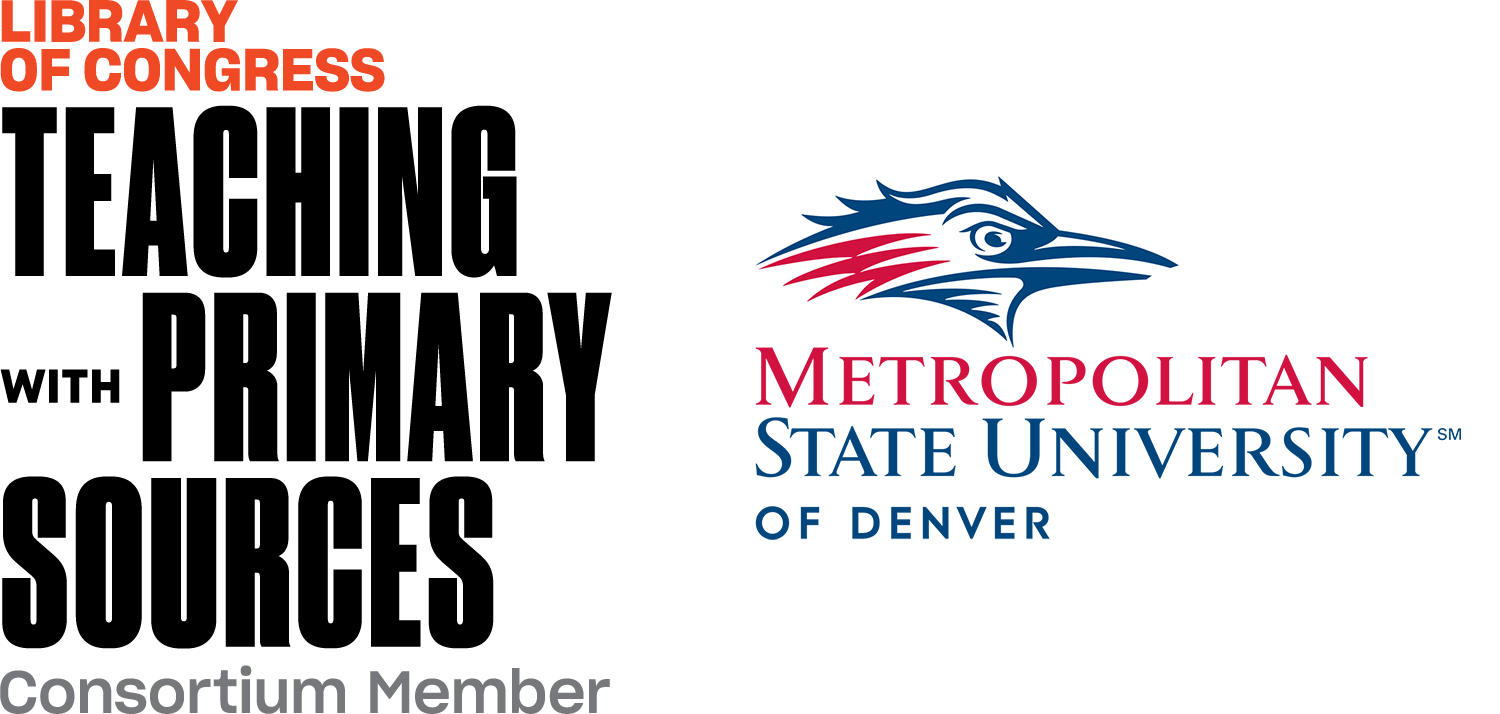On June 22-12, 2018, Teaching with Primary Sources (TPS) Western Region held the 2nd annual Summer Institute in collaboration with the American Museum of Western Art (AMWA) and the History Colorado Center (HC).
Pairing with two of Denver’s amazing museums, AMWA, a private collection of Western Art dating back to 1823, and History Colorado, and a museum dedicated to the history and preservation of the Centennial State, allowed us to make connections the Library of Congress primary source collections with art and artifacts.
How can we look at art as a primary source? What forms of bias or artist perspective can we unravel by analyzing art using the Observe-Reflect-Question analysis process? How can museums play an integral role in the present-day classroom? How can we adapt our thinking (and our students’ thinking) of historical primary sources to coincide with the goals of 21st century learning? These are just a few of the questions we wanted to explore.
Below is an outline of the strategies and resources that were used in the workshop. A link to all of the strategies and resources are on the Google Drive by clicking here.
Day 1 –
At the American Museum of Western Art on June 21, 2018, participants were taken through 4 different stations, all focusing on a different era from the 19th and 20th centuries.
Abstract Expressionism with the Primary Source Analysis Tool
The first station was focused around Helen Frankenthaler’s Phoenix, 1976. Kristin Fong, Museum Educator at AMWA, led an activity using the primary source analysis tool from the Library of Congress asking participants to discuss their observations, reflections, and questions. Though typically done with artifacts that have noticeable characteristics, abstract expressionist paintings typically do not.
Some amazing ideas came out of this activity as it allowed educators to make connections to their own classrooms in new and interesting ways. For example, have you ever tried using abstract art as an introduction to writing poetry?
The Only Documented Case of a Group of Native Americans Derailing A Train
This station was led by Dr. Cynthia Stout, inspiring and inquiry focused educational consultant for Teaching with Primary Sources and the Colorado Encyclopedia. It focused on a painting by Theodore Kaufmann from 1867 called Westward the Star of Empire (Railway Train Attacked by Indians). Paired with the painting were primary source accounts from Porcupine, a Cheyenne participant, General Sherman in response to the attack, and James Atres, who was a resident of the area.
Also interesting are the articles from Chronicling America’s historical newspapers listed in the preconference research linking AMWA with the Library of Congress.
Art and Literature – The Leatherstocking Tales & the Song of Hiawatha
Led by Sherrie Galloway, retired librarian and former Library of Congress Teacher in Residence, and Dr. Rolly Schendel, a curriculum innovator and Professor of Literacy at MSU Denver, this station focused on two paintings depicting James Fenimore Cooper’s Leatherstocking Tales, and one painting depicting Henry Wadsworth Longfellow’s Song of Hiawatha.
Paintings aren’t always thought of as primary sources and neither is historical fiction. Pairing these together and looking at them through the lens of primary source analysis opened up a new line of thinking when introducing students not only to historic fiction and artwork, but also how artistic representation can often lend itself to doing the work of a historian. You can view one of the paintings and different, but corresponding, lesson here.
The Navarre Building – Preservation and Building as Primary Source Artifact
 This last station was led by Michelle Pearson, Middle School Social Studies Teacher, 2012 Colorado Teacher of the Year, tech guru, and ½ of the Two Geeky Teachers. Leading participants on an activity focusing on how to use historic buildings as a primary source, the Navarre building lent itself well to broadening our understanding of what a primary source is.
This last station was led by Michelle Pearson, Middle School Social Studies Teacher, 2012 Colorado Teacher of the Year, tech guru, and ½ of the Two Geeky Teachers. Leading participants on an activity focusing on how to use historic buildings as a primary source, the Navarre building lent itself well to broadening our understanding of what a primary source is.
Due to the lack of internet access, we were given the opportunity to put down the distractions of our devices and dig into each of the resources and strategies. Luckily, innovation comes in many forms, so our teachers were given glue sticks and composition books. Back to the basics!
After the time with AMWA resources on June 21, participants went on a walking tour also led by Michelle Pearson focusing around historical architecture around downtown Denver.
Day 2 –
On Friday, June 22, 2018, participants met at the History Colorado Center for the 2nd day of innovative professional development linking Library of Congress resources and strategies to locally housed and focused primary sources. Resources are available on the Google Drive.
Participants were given an educationally focused tour of two new exhibits currently on display at History Colorado:
- Zoom-In – The Centennial State in 100 Objects – “Culled from the vast collections of History Colorado, every object on view had a role in shaping our state—from the age of the Paleo Indians to Jack Swigert’s Apollo 13 flight suit and beyond.”
- Play Ball! A Celebration of America’s Game – “Treasured memorabilia and iconic photographs bring the past to life through stories that begin on the ball field and echo through American history.”
The 2nd annual Teaching with Primary Sources Western Region Summer Institute was another huge success. Bringing together dedicated teachers from multiple curriculum areas, including Social Studies, History, English, Science, and Library, allowed for some critical and eye-opening discussions. Education with a purpose was never more true than on June 21st and 22nd.
A huge thank you to the American Museum of Western Art, History Colorado, and each and every educator who made the TPS Western Region Summer Teacher Institute a tremendous success.





